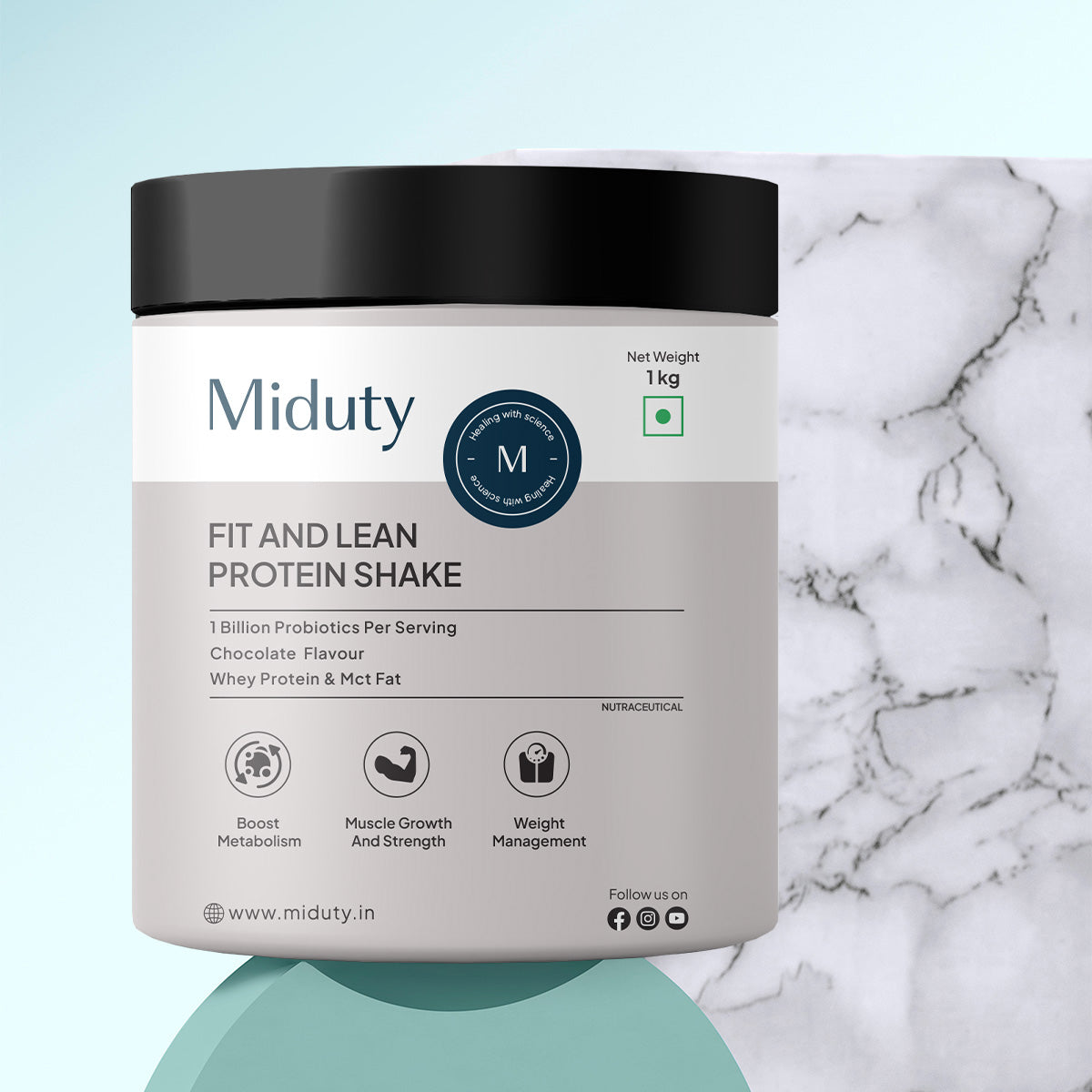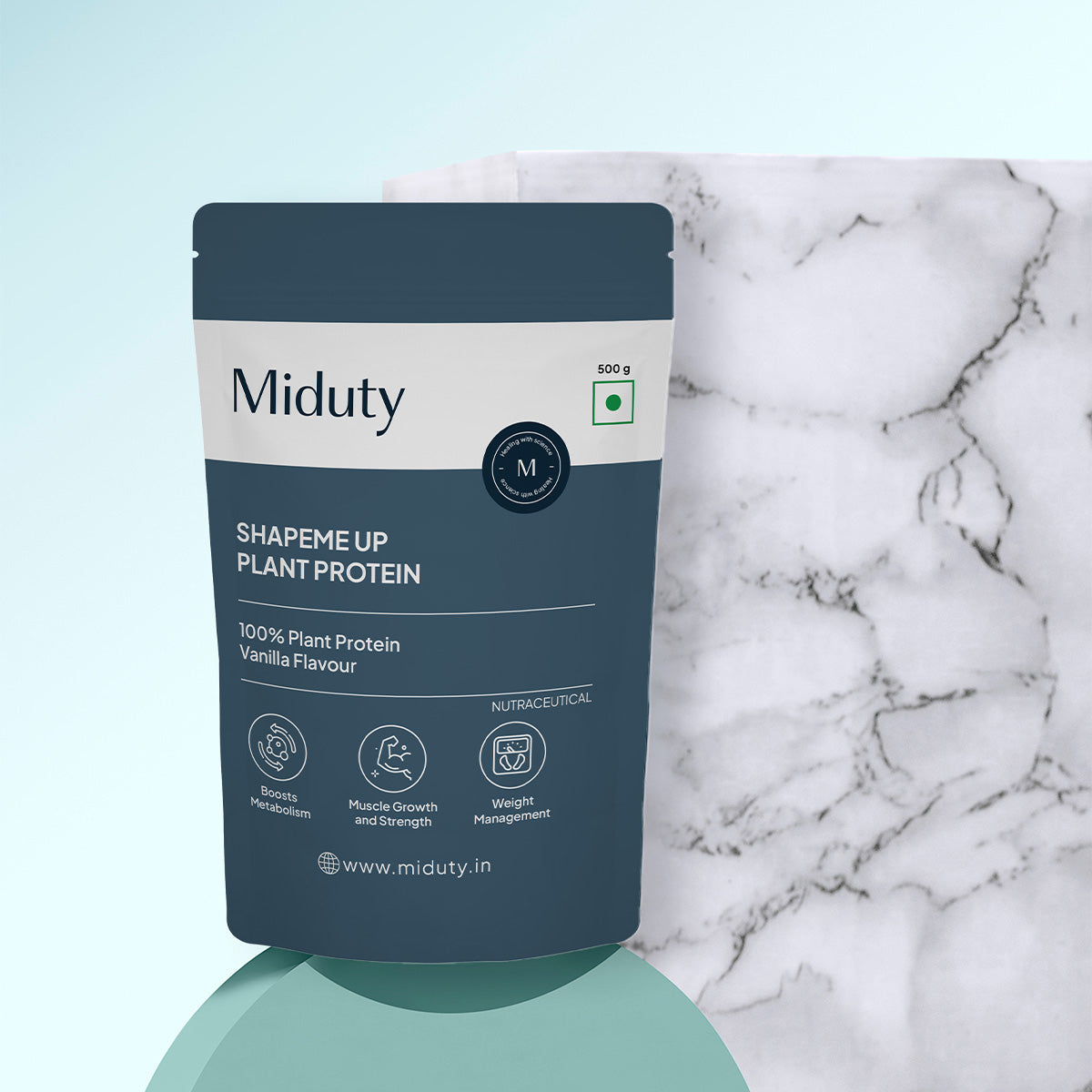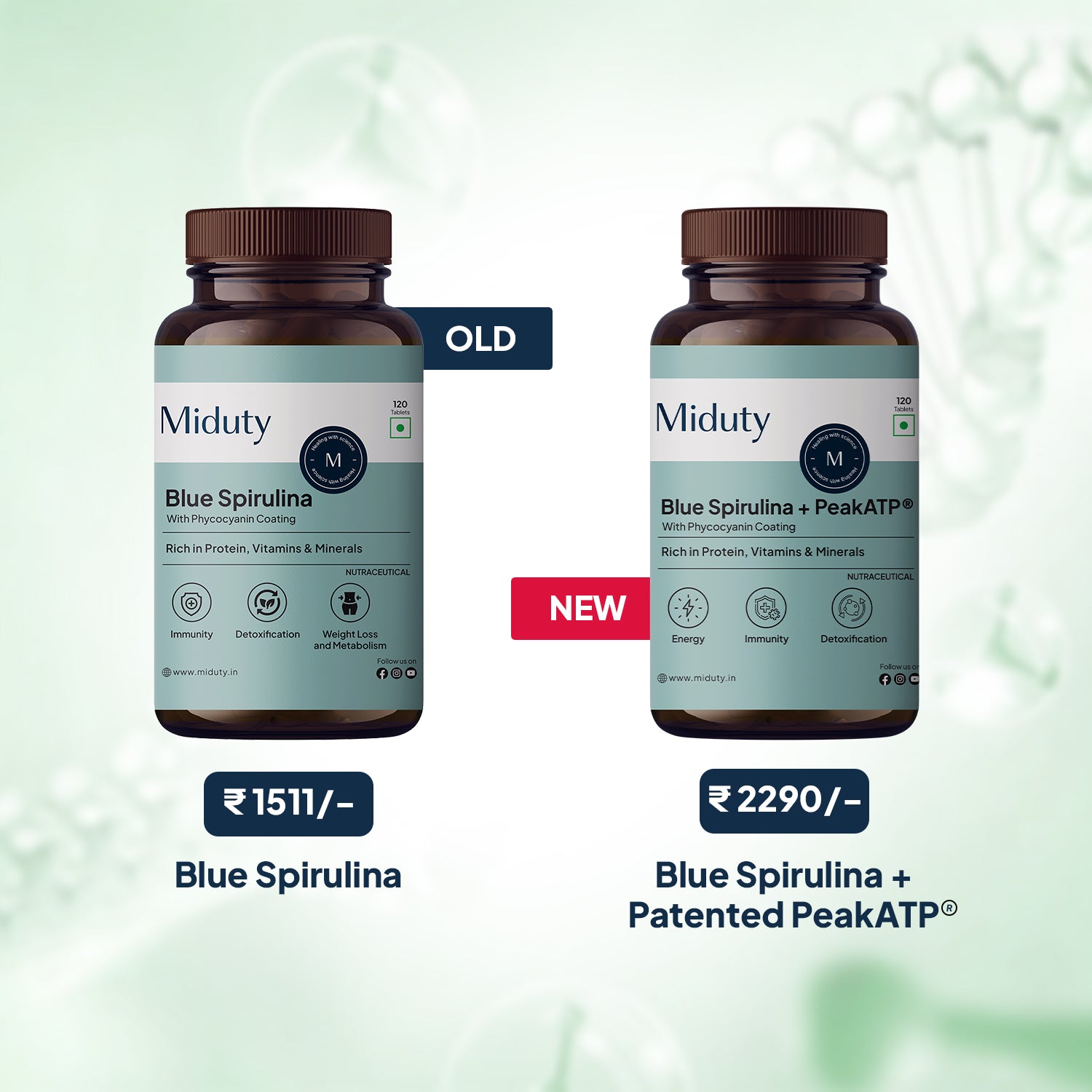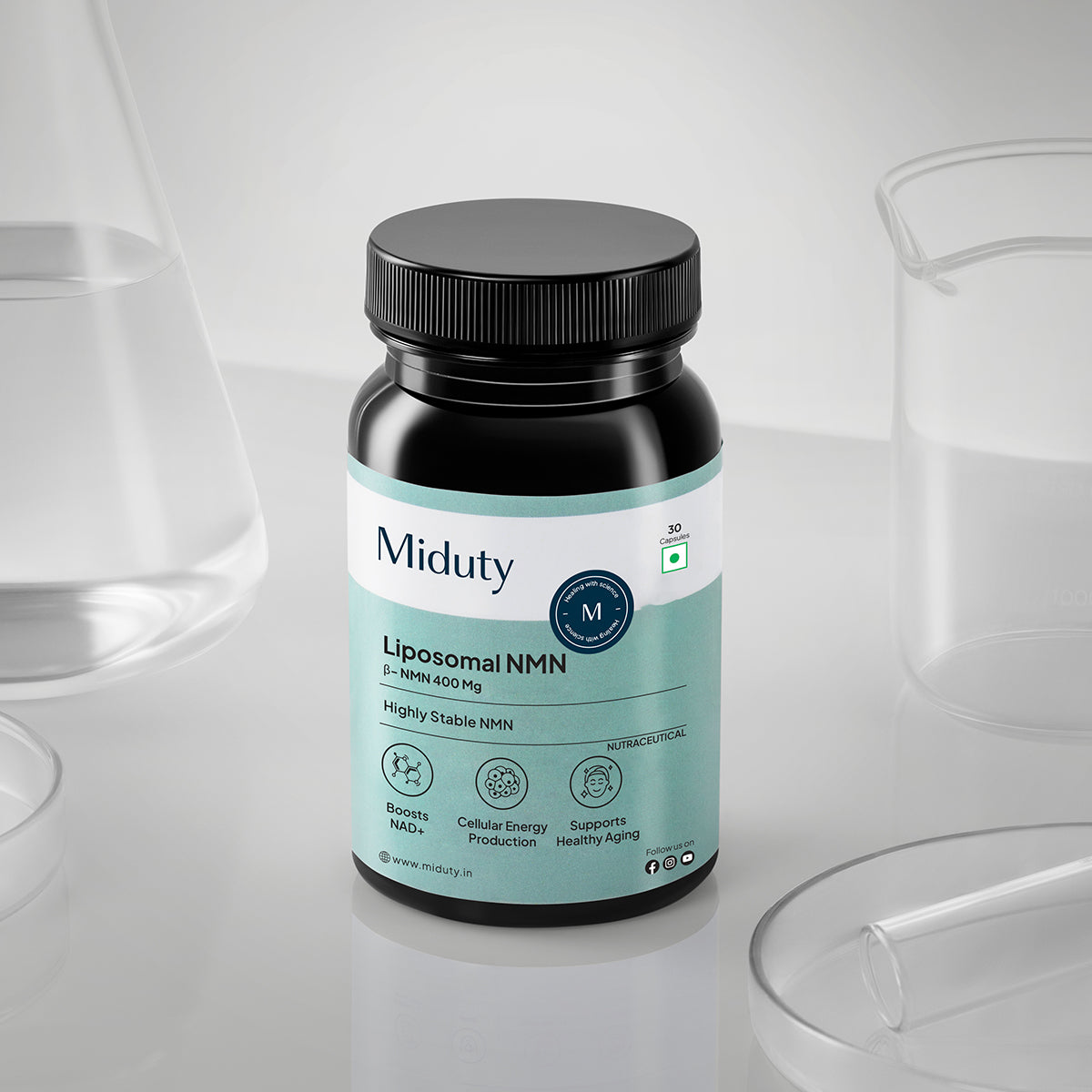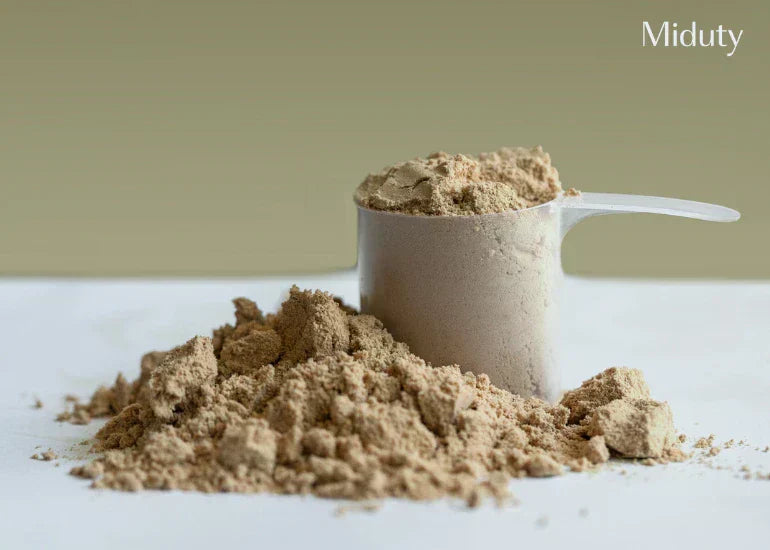
When Is The Best Time To Drink Whey Protein: Pre-Workout or Post-Workout
If you've been around the fitness world for even a short time, you've likely noticed one supplement that everyone, from beginner lifters to seasoned athletes swears by: whey protein. You see it in gym bags, on kitchen counters, and in post-training Instagram stories everywhere.
Why? Because whey protein is a fast-digesting, complete protein source loaded with all nine essential amino acids and rich in BCAAs (branched-chain amino acids) like leucine, which is the "on" switch for muscle building. It's also incredibly versatile, you can drink it as a shake, blend it into smoothies, mix it with oats, or even bake it into recipes.
But while everyone agrees on why whey protein works, the big debate is when to drink it. Should you have your protein shake before a workout to fuel performance and protect muscle, or is it better to take protein after a workout to kickstart recovery and growth?
This is where things get interesting. The timing of your protein shake can influence how your body uses it, especially around training. And while your total daily protein intake matters most, strategic timing may give you an edge in performance, recovery, and results.
In this guide, we'll dive into the science behind protein timing, compare whey protein before vs. after workout, and give you practical advice to help you make the best choice for your goals whether that's building muscle, losing fat, or improving endurance.
Key Takeaways
1. Both pre-workout and post-workout whey protein have benefits—pre-workout helps fuel training and reduce muscle breakdown, while post-workout boosts recovery and muscle growth.
2. Total daily protein intake is more important than exact timing, but consuming whey around workouts can still give you a performance and recovery advantage.
3. Strength and muscle gain goals benefit slightly more from post-workout protein, while endurance training may benefit more from pre-workout protein paired with carbs.
4. The ideal serving size is typically 20–30 g of whey protein before or after workouts, depending on your needs and diet.
5. Pairing whey with carbs post-workout speeds up glycogen replenishment, while pairing it with healthy fats pre-workout provides longer-lasting energy.
What is Whey Protein?
Whey protein is a byproduct of the cheese-making process. When milk is curdled, it separates into curds (solid) and whey (liquid). The liquid whey is then filtered, processed, and dried into the powdered form you find in supplement tubs.
It's considered a complete protein, meaning it contains all nine essential amino acids your body can't produce on its own. What makes whey stand out from other protein sources is not just its amino acid profile but also its ability to be absorbed rapidly by the body, making it perfect for nutrient timing around workouts.
What makes whey stand out from other protein sources is:
- High leucine content—the key amino acid for triggering muscle protein synthesis.
- Rapid digestion—making it perfect for pre- and post-workout nutrition.
- Versatility—can be easily mixed into shakes, baked goods, or other recipes.
Types of Whey Protein
Not all whey protein is the same. The type you choose depends on your goals, budget, and how your body digests dairy. Here are the three main forms:
1. Whey Concentrate
Whey concentrate usually contains 70–80% protein, with the remaining portion made up of carbs (lactose) and fats.
- Best for beginners: It's affordable, tastes better than other forms because of the natural fats and carbs, and works well for general fitness or muscle-building goals.
- Digestibility: Since it still contains lactose, it may cause bloating or digestive discomfort for those who are sensitive to dairy.
- When to use: Great as a budget-friendly everyday protein supplement for people who don't have lactose intolerance.
2. Whey Isolate
Whey isolate is processed further to remove most of the carbs and fats, giving it a protein content of 90% or higher.
- Best for lactose-sensitive individuals: Since it contains very little lactose, it's much easier on the stomach than concentrate.
- Leaner choice: With fewer carbs and fats, it's ideal for those on a calorie-controlled diet, or people who want to stay lean while building muscle.
- When to use: Perfect if you're in a cutting phase, aiming for fat loss, or need a "cleaner" protein source without added calories.
3. Whey Hydrolysate (Hydrolyzed Whey)
This is whey protein that has been pre-digested—the protein chains are broken down into smaller peptides for faster absorption.
- Fastest absorption: It enters the bloodstream quicker than other forms, making it useful for immediate recovery after intense workouts.
- Easier on digestion: Often recommended for people with digestive issues, since the proteins are already partially broken down.
- Downside: It's more expensive and may taste slightly bitter compared to concentrate or isolate.
- When to use: Best for athletes, bodybuilders, or those with high-performance needs who want rapid recovery after training.
Best Time To Drink Whey Protein: Pre Workout or Post Workout
A protein shake before a workout provides amino acids for your muscles while you train, potentially reducing muscle breakdown. A protein shake after a workout helps repair damaged muscle fibers and replenish energy stores.
Both timings have unique benefits, and the best choice depends on your training style, fitness goals, and overall diet.
Drinking Whey Protein Before Workout
Drinking whey protein before exercise gives your body a head start by supplying amino acids before muscle fibers undergo stress. Think of it as "fueling the engine" before a long drive.
Benefits:
- Prevents muscle breakdown: During training, your body can enter a catabolic (breakdown) state, especially if your glycogen stores are low. Having protein beforehand ensures your muscles are protected with a steady stream of amino acids.
- Boosts performance when paired with carbs: Carbs provide quick energy, while protein ensures amino acids are circulating in your bloodstream. Together, they improve stamina and strength output. For example, whey with a banana or oats is a great pre-workout combo.
- Starts recovery early: Since whey is fast-digesting, your muscles begin absorbing amino acids even while you're still exercising. This means recovery doesn't just start after your workout, it begins during your workout.
Drawbacks:
- Digestive discomfort: Drinking a heavy shake too close to your session can cause bloating or sluggishness, especially during high-intensity workouts like HIIT or heavy lifting.
Best Practice:
Consume 20–30 g of whey protein about 30–60 minutes before training. For best results, combine it with a carb source like oats, banana, or whole-grain toast to provide both energy and muscle protection.
Drinking Whey Protein After Workout
Post-workout is when your body is in a recovery-focused state. Muscles are damaged, glycogen stores are depleted, and your body is primed to absorb nutrients. Whey protein here acts like a "rebuilding kit" for your muscles.
Benefits:
- Maximizes muscle recovery: After strength training, your muscle fibers need repair. Whey protein provides a rapid influx of amino acids to kickstart muscle protein synthesis (the rebuilding process).
- Replenishes glycogen when paired with carbs: Adding a fast-digesting carb like fruit, rice, or honey helps restore glycogen quickly, reducing fatigue and soreness the next day.
- Convenient and easy to consume: After a tough workout, appetite often drops. A shake is quick, light, and doesn't require cooking—making it perfect when you don't feel like eating solid food right away.
Drawbacks:
- Less urgent if you already had protein pre-workout: If you had a protein-rich meal or shake shortly before exercising, your amino acid levels may still be elevated post-workout. In this case, timing is less critical as long as you meet your daily protein needs.
Best Practice:
Take 20–40 g of whey protein within 1–2 hours after training. For better recovery, pair it with a carb source such as rice, banana, or dates to restore glycogen and improve muscle repair.
Whey Protein Before or After Workout: Which Is Better?
|
Feature |
Pre-Workout Whey Protein |
Post-Workout Whey Protein |
|
Main Goal |
Reduce muscle breakdown, fuel training |
Maximize recovery, rebuild muscle |
|
Best For |
Endurance & long workouts |
Strength & muscle growth |
|
Timing |
30–60 min before training |
0–2 hours after training |
|
Energy Impact |
Boosts stamina with carbs |
Restores energy & glycogen |
|
Digestive Impact |
May feel heavy close to workout |
Easy to digest post-exercise |
|
Ideal Pairing |
Whey + oats/banana |
Whey + fruit/rice |
When is the Best Time to Drink Whey Protein for Best Results?
Here's the truth: total daily protein intake matters more than exact timing. Whether you drink whey protein before or after a workout, you'll see results if you're consistently hitting your protein target (about 1.6–2.2 g per kg of body weight).
However, timing can still give you a performance and recovery edge:
- Strength training & muscle gain: Post-workout is slightly more effective.
- Endurance training or long workouts: Pre-workout protein and carbs work best.
- High-intensity training: Consider both pre- and post- for maximum support.
How Much Protein Should You Take Around Workouts?
Protein plays a crucial role in muscle repair, growth, and overall performance. The right amount depends on your fitness goal, body weight, and training intensity.
Protein Needs Based on Goals
1. General Fitness: Aim for 0.8–1.2 g per kg of body weight daily to support overall health and light exercise.
2. Muscle Gain: For building muscle, increase intake to 1.6–2.2 g per kg to maximize protein synthesis.
3. Fat Loss: During cutting phases, protein needs are higher — about 1.8–2.5 g per kg — to preserve lean muscle while reducing body fat.
One standard whey protein shake (20–30 g protein) is usually sufficient to stimulate muscle protein synthesis after a workout.
Pairing Whey Protein with Other Nutrients
Combining whey with the right macronutrients can enhance its benefits.
1. With Carbohydrates (Post-Workout): Carbs help restore glycogen and speed up recovery. Example: Whey shake with a banana or whey blended with rice.
2. With Healthy Fats (Pre-Workout): Fats slow digestion and provide sustained energy. Example: Whey mixed with chia seeds or nut butter.
Common Mistakes to Avoid with Protein Timing
1. Overloading on Protein: Consuming more protein than your body can use won't accelerate muscle growth — it may just strain digestion.
2. Relying Only on Shakes: Whey protein is a supplement, not a substitute for balanced meals. Whole foods like chicken, eggs, beans, and fish are essential.
3. Bad Timing: Downing a shake right before intense exercise can cause bloating or discomfort. Give your body time to digest before training.
Protein timing matters, but balance is everything. Whether your goal is fitness, muscle gain, or fat loss, the right protein intake combined with smart nutrient pairing will maximize results without overdoing it.
Conclusion
The debate over protein before or after workout isn't about finding one "perfect" answer—it's about matching your protein timing to your goals.
If you want to fuel your workout and reduce muscle breakdown, take whey protein before you train. If your priority is fast recovery and muscle growth, post-workout is your best bet. And for those with intense or frequent training schedules, having whey both before and after may be the ultimate strategy.
Research suggests it doesn't matter whether you drink a protein shake before or after your workout—what truly matters is your total daily protein intake. Whey protein is simply one of the most efficient and convenient tools to help you hit that target, whether you're lifting heavy, training for endurance, or working toward a leaner physique.
Frequently Asked Questions on Best Time to Drink Whey Protein -
Q1 - Is it better to drink whey protein before or after workout?
For an energy boost and improved stamina, whey protein before a workout can be beneficial. To support recovery and muscle growth, a post-workout protein shake is ideal. In the end, consistency is what matters most.
Q2 - Can I take whey protein on an empty stomach?
Yes, you can take whey protein on an empty stomach, especially in the morning after fasting. It provides a fast source of protein for muscle recovery, promotes satiety, and is safe to consume. Just be sure to follow up with a balanced meal to meet your overall nutrition needs.
Q3 - How to drink whey protein correctly?
To prepare whey protein, mix the powder with water, milk, or a milk alternative in a shaker or blender for a smooth consistency, avoiding hot liquids that may damage the protein. Drink it when it fits your goals, post-workout, as a meal replacement, or alongside meals while maintaining a balanced whole-foods diet.
Q4 - Can I drink whey protein every day?
Yes, you can drink whey protein daily, as it's a safe and convenient way to boost protein intake, especially if you're active or struggle to meet your needs through food alone. Just be mindful not to exceed your total protein requirements and watch for digestive issues, particularly if you're lactose intolerant.
Q5 - Can I drink whey protein without a workout?
Yes, you can take whey protein without working out, as it helps boost daily protein intake while supporting muscle maintenance, weight management through satiety, and immune function. However, without exercise, it won't significantly increase muscle growth. Be mindful of your overall calorie and protein intake, since excess protein can be stored as fat, and consistently high amounts without adequate activity may place strain on the kidneys over time.
References


